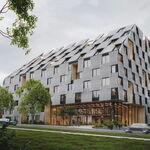DSCToronto
Superstar
Member Bio
- Joined
- Jan 13, 2008
- Messages
- 21,917
- Reaction score
- 35,564
- Location
- St Lawrence Market Area
You clearly get around the City so why not go and look for yourself?Speaking of St Andrew Station's fare gates, I'm not quite familiar with the station as I've only gone through it twice, but why are there two fare lines on the North and South with entrances and exits on the East and West? Why not have fare lines on the East and West so that there's the option to go to the north or south side escalators/stairs? Is it because the fare collector booth is in the middle of the south fare line and moving it is not worth it?




